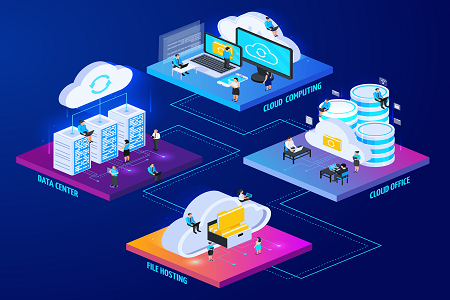Salient IT Services › Cloud Data Backup Lodi
What you need to know about cloud data backup in Lodi
Cloud data backup facilitates quick restores, especially in disaster-recovery situations. For the most part, it works along the same lines as traditional data backups, there are, however some differences it is important to understand. With that in mind, here is a quick guide to what you need to know about cloud data backup in Lodi.
You usually still work on the principle of the 3-2-1 strategy
According to the traditional 3-2-1 strategy, you need three copies of your data, over two media with one copy kept off-site. The reason why there is a twist to this in the cloud is that these days probably the majority of cloud infrastructure is technically off-site. This means that your main cloud has to be counted as an on-site location even if the hardware is located elsewhere.
It is very risky to rely on the data backups taken by public cloud platforms
Some SMBs, especially smaller ones, might be tempted to save themselves the hassle of organizing data backups to a second cloud and just rely on the data backups taken automatically by the main cloud vendors. While this is understandable, it’s also very risky.
First of all, even the mighty can fall. In other words, even the major cloud platforms can have technical problems or fall victim to a cyber-attack. Admittedly it is highly unlikely but it is possible. Secondly, in the public cloud, data security is a shared responsibility. The cloud vendor takes care of securing their platform against external threats. Each client (or “tenant”) has to ensure that their own accesses are used appropriately.

In other words, if a cyber-attacker tries to compromise the cloud platform to delete your data, that is their problem, but if one of your accesses is used to delete data which you did not want to be deleted then, regardless of whether it was accident or malice, it is still your problem.
This means that it is still very much worth making the effort to arrange cloud-to-cloud data backups, especially since doing so can lay the foundation of a cloud-based disaster-recovery solution.
You can usually backup data from a private cloud to a public one
First of all, it’s worth noting that the security of public clouds is improving all the time and it is often possible to use them even if you are working in a heavily-regulated industry. It may, therefore, be worth looking into the possibility of using the public cloud as a full disaster-recovery solution. If it’s not an option at the moment, it may become one in future.
If that’s not possible, however, you can generally still use the public cloud as a place to store your data backups, provided that you encrypt them on your own servers and keep them encrypted until they are either back on your own servers (for a restore) or deleted. What you can’t do is decrypt them in the public cloud, which means that you can’t use the public cloud as a disaster-recovery solution.
This gives you two main options. One option is to use the public cloud to store your data backups and have a separate disaster-recovery solution which also has import/export access to it and the other is to set up a disaster-recovery solution which you also use to hold your data backups.
Which option you choose will depend on whether your priority is minimizing costs (in which case you probably want to go for the public cloud) or minimizing recovery time (in which case you probably want to have your disaster-recovery solution also hold your data backups). Another option would be to have separate backups for your critical data and your non-critical data. You could hold your critical data in your disaster-recovery cloud and your non-critical data in the public cloud.
You must apply robust data governance to keep costs down
Regardless of whether you are backing up to a public cloud or a private cloud, managing your data effectively is key to managing your cloud spend.
First of all, you need to be sure that sensitive data is always identified and treated appropriately regardless of whether it’s in a production system, held as a backup or put in an archive. Failure to do this can result in serious penalties.
Secondly, you only want to take backups of your active production data. Any data which is lying dormant should either be put in an archive or deleted. This not only minimizes the amount of storage and bandwidth you use but also reduces the time to recovery.
Thirdly, you need a process for deleting expired data backups (and also archives although these tend to be much lower cost).
If you’d like to speak to a reputable and experienced cloud data backup provider in Lodi, please click here now to contact Salient IT.



